Hashishene: A Terp That Gives Moroccan Hash Its Unique Aroma
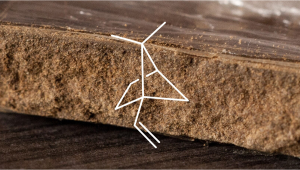
- 1. What is hashishene?
- 1. a. The reason moroccan hash is so popular
- 2. How hashishene was first discovered?
- 2. a. Abundant in maroccan hash, but hardly present anywhere else
- 3. Why hashishene is present in hash but not in buds?
- 3. a. It’s all about the hash making process
- 3. b. Other terpenoids may be produced the same way
- 3. c. A lot still remains a mystery
- 4. Other commonly found terpenes in cannabis
- 5. The bottom line
- 6. External references
Believe it or not, but hasishene was discovered by scientists as early as 2014. However, this terpene has largely remained under the radar of the weed growing community and only recently made the headlines in the industry’s publications.
What Is Hashishene?
Hashishene is a cannabis terpene that is found in Moroccan hash and gives it such a unique earthy and floral flavor. Scientists believe that, to get hashishene, you need to handle buds a certain way.
Read on, and you may well rethink your traditional approach to the process of drying and curing your harvest.
Basically, hashishene is a garbled version of beta-myrcene, a very common and familiar terpene that is not unique to cannabis, but is also found in copious amounts in other plants, such as mangos, hops, bay, and barley.
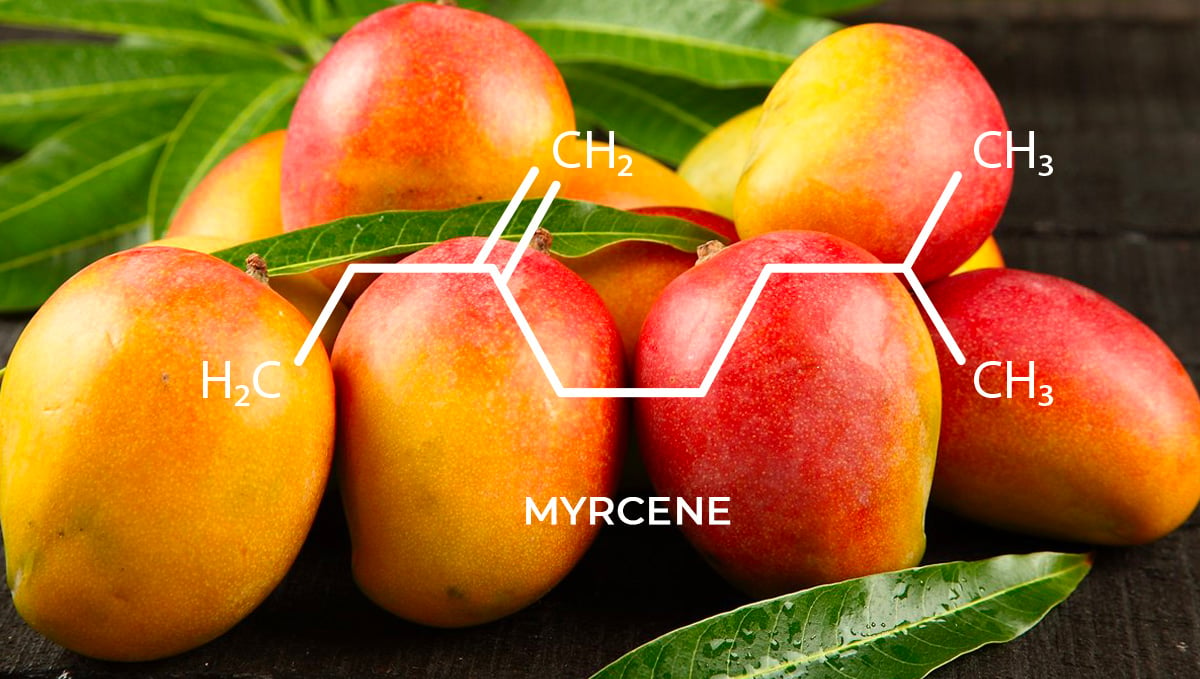
Hashishene and myrcene have the same formula—C10H16—and the same molecular weight, only the atoms are arranged differently.
The exact formula of hashishene looks rather intimidating — 5,5-dimethyl-1-vinylbicyclo[2.1.1]hexane. Luckily, the scientists who discovered this substance coined a much shorter and memorable name for it. And the name reflects a sad fact that this rare terpene is only found in large quantities in some forms of hash. Specifically, Moroccan hash which is so familiar to European users, but practically unknown in the US and elsewhere.
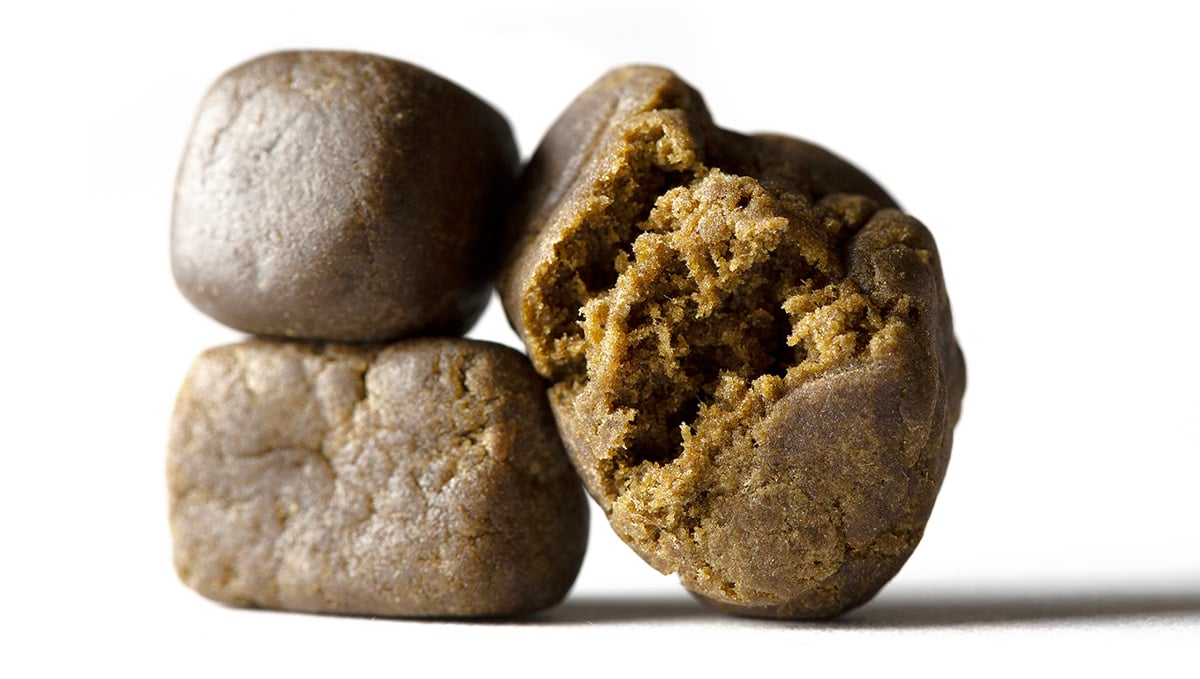
The Reason Moroccan Hash Is So Popular
Morocco is a country in Northern Africa that surely prides itself on many things. And one of those things is Moroccan hash. Europeans love it for its unique mellow high and its memorable taste — smooth, earthy, floral, and sweet. The calming qualities of the effect may be due to the high level of CBD that some of Moroccan strains supposedly have. The other possible explanation may be the unique low-tech methods of hash manufacturers in this country. These methods may contribute to a higher rate of THC degrading to cannabinol, and the latter produces only mild sedative effects.
As for the signature flavor of Moroccan hash, different people propose different theories. A prevalent idea is that there’s something unique about the soil in Morocco, specifically in its Rif Valley. The soil there is exceptionally poor and dry, and growers who attempt to cultivate Moroccan weed indoors are advised not to overfeed their plants and to give them the minimal amount of water.

There’s also the Ketama genetics (Ketama being a small rural community in Morocco) which is associated with the highest quality hashish. They say that the only way to obtain the same hashy taste from the Ketama varieties grown indoors is to use the native Ketama soil.
As we shall see, the scientists who first isolated hashishene cast a doubt on these theories.
How Hashishene Was First Discovered?
In its November 2014 issue, Journal of Chromatography published a study about a new terpene that could be an aromatic marker of hashish. The declared goal of the researchers was to create a technology that would help to identify contraband without the aid of drug sniffing dogs. As it often happens, the results were very much different.
The scientists who worked at the University of Nice in Southern France studied several samples of cannabis resin confiscated by the authorities during seizures. All in all, they analyzed about 15 grams (approximately a half ounce) of hashish “probably originating from Morocco”. The authors were amazed to detect a terpenoid that no cannabis researcher had described before.
Abundant In Maroccan Hash, But Hardly Present Anywhere Else
The team proposed a name for the new substance—hashishene—which reflects its uniqueness.
The findings of the team were remarkable: the percentage of hashishene was pushing 14.9% of the overall terpene content in some samples. Before that, this exotic chemical wasn’t exactly unknown to science, but was previously found only in small quantities and only in one plant — the Scotch Spearmint (Mentha cardiaca L).
The other amazing finding was that, in contrast to hashish, dried flowers of cannabis had very little of the new terpene. So little in fact that it had eluded the attention of cannabis enthusiasts before.
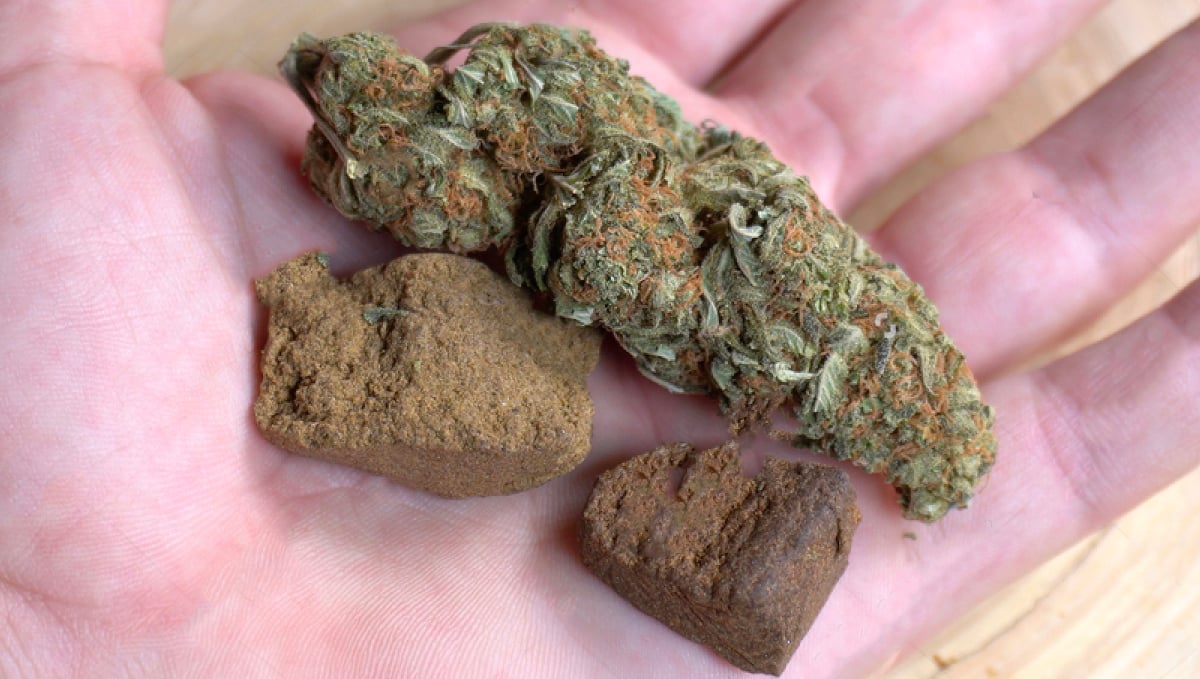
Please note that terpenes in general have been in focus of cannabis studies for some time now, probably as much as cannabinoids proper. The reason for that is the so-called entourage effect. The entourage effect means that the high:
- is mostly created by THC,
- then balanced by the presence of CBD and other cannabinoids,
- further modulated by terpenes, terpenoids, and flavonoids.
Why Hashishene Is Present In Hash But Not In Buds?
If a substance is absent in dried flowers, but then mysteriously appears in a product—hashish—that is manufactured from them, it can mean only one thing: there was some source chemical in the dried buds and this chemical was somehow converted into another compound during the subsequent stages.
It’s All About The Hash Making Process
The scientists soon discovered that hashishene was, in fact, very similar to myrcene which is present in cannabis buds in large quantities and is very familiar to weed lovers. Both terpenes have the same number of atoms and of the same kind, but, in hashishene, they are rearranged in a different pattern.
This rearrangement, the team hypothesised, happens because of the unique way Moroccan weed farmers produce their hash. They put the harvested plant tops on the roofs of their huts, and there they dry under the UV-rich African sun. Besides, when the buds have been dried this way, the lengthy process of sifting begins. This is also the time when the plant material is constantly exposed to direct sunlight.
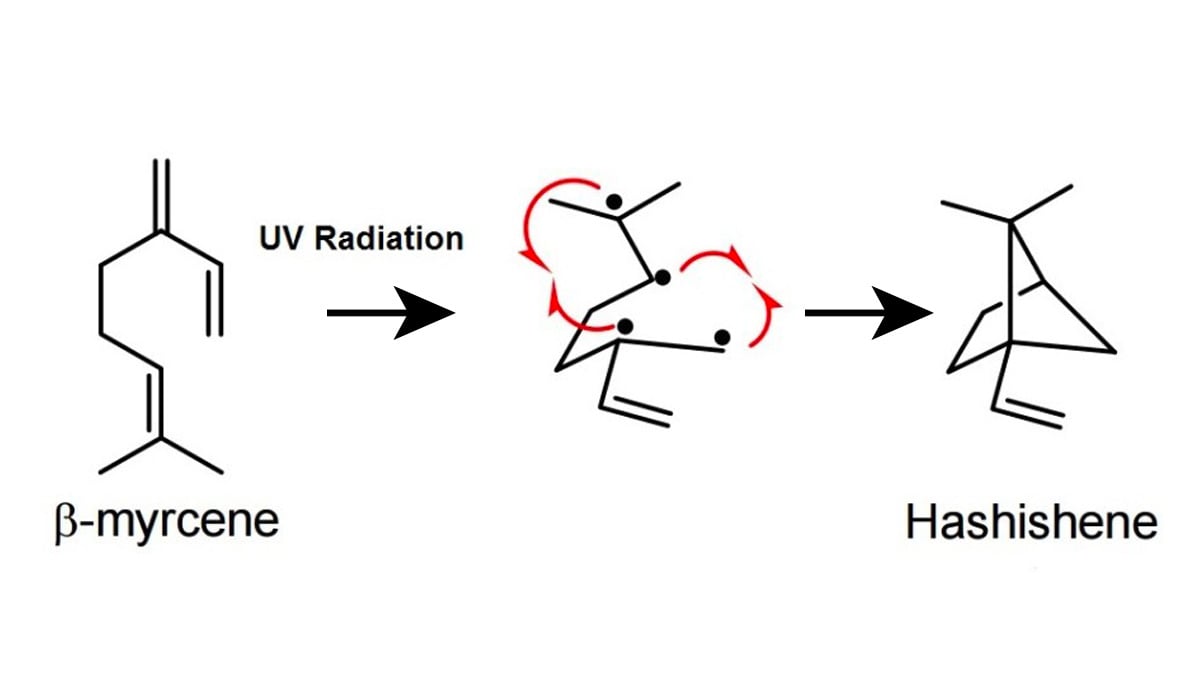
The other factor is oxygen, and the whole process is called photo-oxidation. Conversely, the standard good practice of urban weed growers of the West is NOT to expose drying and curing buds to any direct light. They also limit the availability of oxygen by slowly curing dried flowers in closed glass jars. The thing is that both light and oxygen degrade THC to cannabinol, a substance that has some calming qualities, but hardly any recreational value. In a culture, where the focus is always on potency, drying your hard-won produce in the sun seems barbaric. But, as we have seen, it also may have its advantages.
Other Terpenoids May Be Produced The Same Way
The story doesn’t end with myrcene turning into hashishene. The same happens for other, minor terpenoids. You don’t have to be Ph.D. in cannabis science to know that buds change the way they smell, taste, and affect your mind and body throughout the whole span of ripening, drying, curing, and even storing. This happens because major terpenes constantly undergo chemical reactions and serve as a source for synthesis of countless terpenoids.
So, when your herbs are pounded by both sun and wind, it doesn’t mean that all terpenes, being very volatile, simply evaporate, making the smell and the taste bland and robbing the high of nuances. Some terpenes are actually transformed into something new and sometimes very interesting. And Moroccan hash is just one example of that.
A Lot Still Remains A Mystery
The reaction of turning myrcene into hashishene has now been described in broad outline by science. Moreover, there are companies that insist they have mastered the process, and even offer pure hashishene for sale.
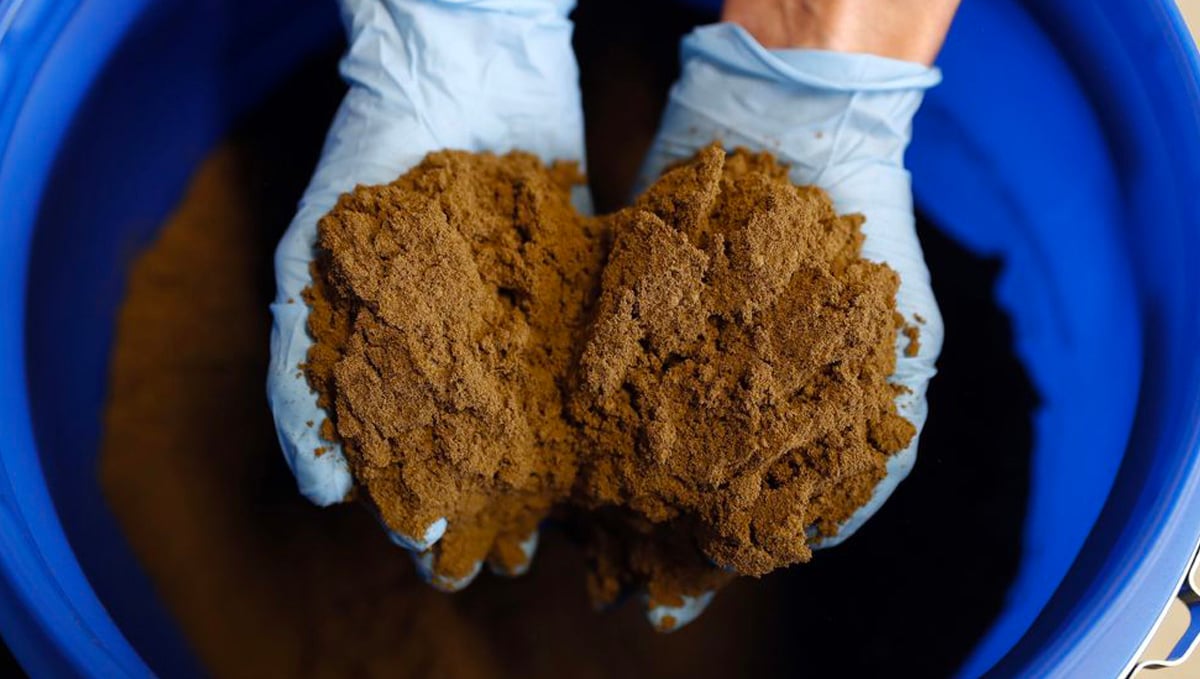
However, there are quite a few unknowns remaining. While photo-oxidation relies, by definition on the presence of oxygen and exposure to sunlight, there are probably also some unidentified chemicals involved. These photosensitizers are believed to serve as catalysts, but what they are and how they take part in chemical reactions inside cannabis is something to be yet discovered.
Other Commonly Found Terpenes in Cannabis
Myrcene
We have gone into detail above about how myrcene is the precursor to hashishene, but we haven't really talked in detail about the terp itself, so let's do that now. Myrcene is actually the most abundantly found terp weed, and is estimated to make up as much as 65% of all cannabis terpenes. It is present in around 1/5th of all modern cannabis strains, and is responsible for that beautiful earthy, piney, herbal underlying tone that we all know and love. In terms of possible health benefits, myrcene is thought to offer help with
- Sleep disorders
- Anxiety
- Depression
- Muscle spasms
- Stress
- Inflammation
Myrcene is found throughout the plant world, with high concentrations found in mangoes, hops, thyme, bay leaves, and lemongrass.
Limonene
Limonene is the most aromatic of all the terps found in ganja, with strains like Sour Diesel and Super Lemon Haze really demonstrating this well. It has a distinctly citrusy and sharp aroma, which is why it's such a popular terp for breeders to throw into the mix, but it is also lauded for its medicinal qualities. It is thought to offer the following benefits:
- Mood elevation
- Anti-bacterial qualities
- Antifungal qualities
- Help with depression
Limonene is found mostly in the citrus family, with high concentrations in lemon and orange fruits, as well as lemongrass.
Linalool
Linalool is one of the more subtle terps found in cannabis, but it also gives weed that true 'pot' smell. It's an aroma that you'll find in strains like OG Kush and Amnesia Haze, with a mild floral and spicy aroma. It's also commonly used due to its potential medicinal benefits, which include:
- Helps with pain relief
- Anti-inflammatory
- Sedative effects
- Help with insomnia
- Potential anti-tumor properties
It is found all throughout nature, particularly in lavender, and is also used widely in certain soaps and cleaning products.
Terpinolene
Terpinolene is another of the more subtle terps found in marijuana, but it adds a great floral and herbal aroma. It often presents as an apple or lilac-like aroma and is used extensively throughout the cosmetic industry thanks to the delicate fragrance it offers. It also has potential medicinal benefits, including help with:
- Anxiety relief
- Depression relief
- Pain relief
- Anti-inflammatory effects
- Help with stress
It is found in many different plants, with particularly high concentrations being present in pine needles and conifer trees.
Alpha-Pinene and Beta-Pinene
Alpha and beta-pinene are two teprenes that share a huge amount of similarities, and both found in weed, but they have slightly different aromas. Alpha-pinene has a more earthy, woody aroma, whilst Beta-pinene has a slightly more sweet and floral aroma. Both have potential medicinal benefits, including:
- Help with asthma
- Anti-inflammatory effects
- Antioxidant properties
- Help with memory impairment
- Potential anti-cancer benefits
They are both found throughout nature, with particularly high concentrations being found in pine needles, rosemary, and basil.
Caryophyllene
Caryophyllene is the final terp we'll look at, and it's often referred to as 'spicy' or woody'. It is the terp that gives strains like Jack Herer and Girl Scout Cookies their unique flavor, with a strong aroma of pepper, cloves, cinnamon, and herby goodness. This terpene is the only one that has been proven to actually bind to the CB2 receptor, which means it definitely modulates how the cannabinoids interact with out bodies. It's also thought to offer the following health benefits:
- Help with pain relief
- Anti-inflammatory effects
- Help with anxiety
- Help with mood
It is found in a variety of different plants, including black pepper, oregano, basil, and hops.
The Bottom Line
The discovery of a new terpene and the possible explanation of its synthesis has many implications. First, it can be of practical value to those weed enthusiasts who would like to learn how to make hash that tastes exactly like the traditional product of Morocco. Second, it sheds light on a whole class of chemical reactions that can potentially produce many new terpenoids. And third, it’s not hard to imagine that hashishene, this new celebrity in the all-star team of cannabis constituents, has some unique therapeutic properties.
After all, cannabis science is still in its infancy, and we are sure to still learn a lot about this amazing plant.
External References
- Multidimensional analysis of cannabis volatile constituents: Identification of 5,5-dimethyl-1-vinylbicyclo[2.1.1]hexane as a volatile marker of hashish, the resin of Cannabis sativa L., Marie Marchini et al., Journal of Chromatography, Volume 1370, 28 November 2014, Pages 200-215
- Cannabis Sativa L.: a comprehensive review on the analytical methodologies for cannabinoids and terpenes characterization, Giuseppe Micalizzi et al., Journal of Chromatography, Volume 1637, 25 January 2021
- The effect of cannabis dry flower irradiation on the level of cannabinoids, terpenes and anti-cancer properties of the extracts, Olga Kovalchuk et al., Biocatalysis and Agricultural Biotechnology, Volume 29, October 2020







Comments